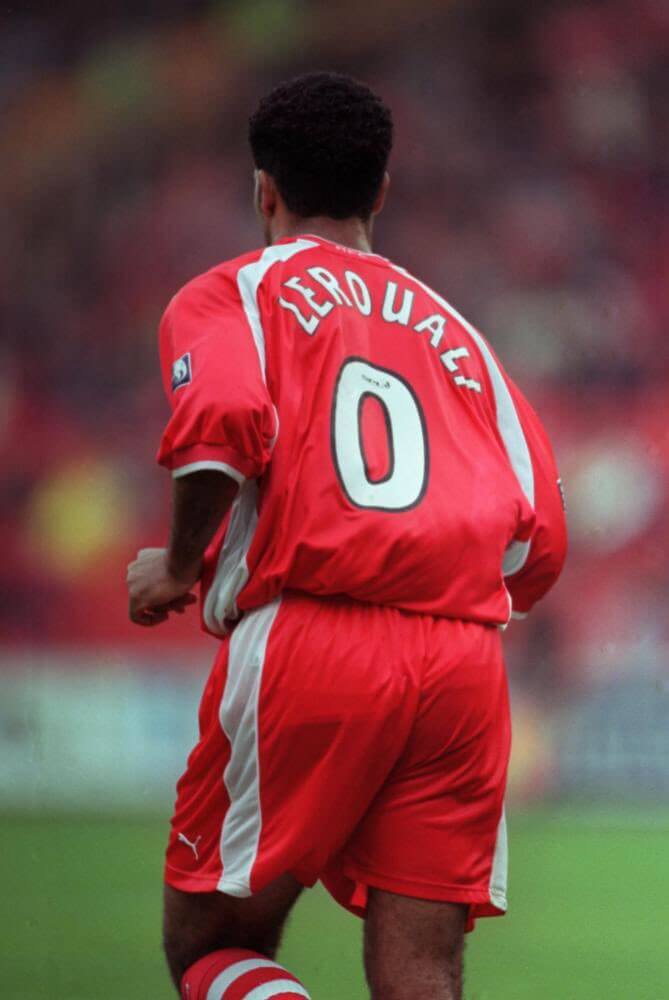First, soccer is one of the most popular sports in the world, with millions of fans tuning in to watch the game weekly. One of the most important aspects of a soccer game is the player’s uniform, including the jersey number.
Fans and players alike are often curious about the numbers players can wear on the pitch. One question that often comes up is whether soccer players can wear the number 0.
In this article, we’ll explore the rules surrounding jersey numbers in soccer and take a closer look at the number 0.
Can Soccer Players Wear Number 0?
Yes, soccer players can wear the number 0. However, the rules around jersey numbers can vary depending on the league and the country where the game is being played.
The unique case of Hicham Zerouali, a Moroccan footballer who wore jersey number 0, adds an intriguing dimension to the discussion. Zerouali, affectionately nicknamed “Zero,” chose the number 0 as a clever play on words with his name. This unconventional choice garnered attention during his time playing for the Scottish club Aberdeen.

However, it’s worth noting that the Scottish league eventually banned the use of the shirt number 0. This decision introduced an interesting twist to Zerouali’s story and raised questions about the acceptance and regulations surrounding non-traditional jersey numbers in different leagues.
The banning of the number 0 by the Scottish league demonstrates the influence and control that leagues may have over players’ jersey number choices. While Zerouali’s decision to wear the number 0 was a personal and creative one, it ultimately faced restrictions within the Scottish league’s guidelines.
This incident sheds light on the complexities and variations in jersey number regulations across different leagues and countries. It serves as a reminder that while players may desire to express their individuality through unique numbers, they must adhere to the rules and regulations set by the governing bodies of the sport.
Zerouali’s story stands as a testament to the impact a player’s choice of jersey number can have on their identity and the fondness fans develop for players with unconventional numbers. Although the number 0 may be prohibited in certain leagues, it remains a memorable and intriguing part of soccer history through the story of Hicham Zerouali.
Jersey Number Rules in Soccer
Before we dive into the number 0, let’s take a closer look at the rules surrounding jersey numbers in soccer.
In most leagues, players are assigned a number between 1 and 99, with a few exceptions.
For example, in Major League Soccer (MLS), players can only wear a number between 1 and 30.
In some leagues, such as the English Premier League, the number on a player’s jersey corresponds to their position on the field.
In addition to the number range, there are also rules about the size and placement of the number on the jersey.
According to FIFA’s Laws of the Game, the numbers on a player’s jersey must be at least 25cm (9.8 inches) high and 20cm (7.9 inches) wide. The number must be centred on the back of the jersey, between the shoulder blades.
The number must also be visible from a distance, which means it should be a contrasting colour to the jersey itself.
==>> You can also read: Why do goalkeepers wear number 1 in soccer?
A Closer Look at the Number 0
Now that we’ve covered the basics of jersey number rules in soccer, let’s turn our attention to the number 0.
As we mentioned earlier, players can wear the number 0, but it’s not as common as other numbers.
So why don’t more players wear the number 0? One reason is that it’s not a traditional jersey number in soccer.
Many players choose numbers that have significance to them, such as the day they were born or their favourite player’s number. The number 0 doesn’t have the same personal meaning as other numbers.
Another reason is that the number 0 can be seen as a negative number. In soccer, the goal is to score as many goals as possible, so wearing a number that represents zero goals may not be appealing to some players.
Should More Players Wear the Number 0?
While the number 0 may not be as popular as other numbers, there’s no reason why more players shouldn’t wear it. Soccer is a sport that values individuality and creativity, and wearing a non-traditional number can be a way for players to express themselves.
In fact, some fans and analysts have called for more players to wear the number 0.
They argue that the number represents a new era in soccer, where players are not defined by their position on the field but by their overall skill and versatility.
Ultimately, the decision to wear the number 0 is up to the player and the rules of their league.
Some leagues may have restrictions on specific numbers or may require players to choose from a specific range of numbers. However, for players who have the option, wearing the number 0 can be a bold and unique choice.
Wrap Up
In conclusion, soccer players can wear the number 0, although it’s not as common as other jersey numbers.
The rules around jersey numbers can vary depending on the league, but in general, players are assigned a number between 1 and 99.
The number 0 is a non-traditional number that has been worn by one player only.
While the number 0 may not have the same personal meaning as other numbers, it can be a way for players to express their individuality and creativity on the field. As soccer continues to evolve, we might see more players embrace the number 0 and other non-traditional jersey numbers.
At the end of the day, what matters most is a player’s skill and performance on the field, regardless of the number on their jersey.
So, whether a player wears the number 0 or another number, what’s important is that they play with passion, determination, and sportsmanship.

